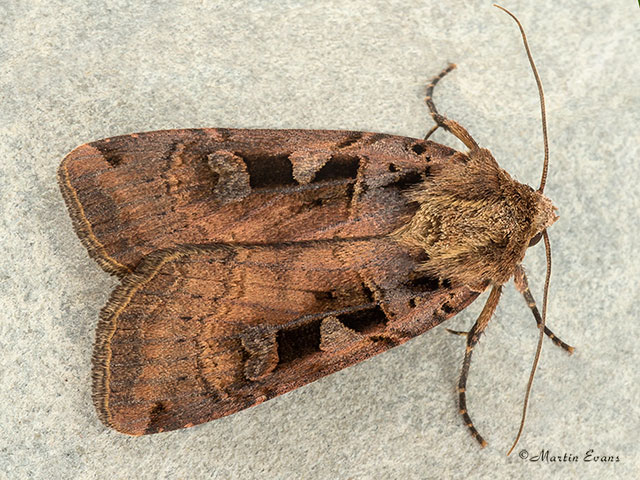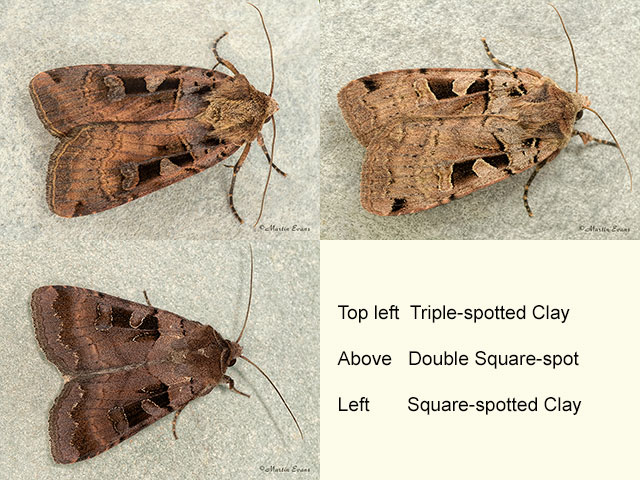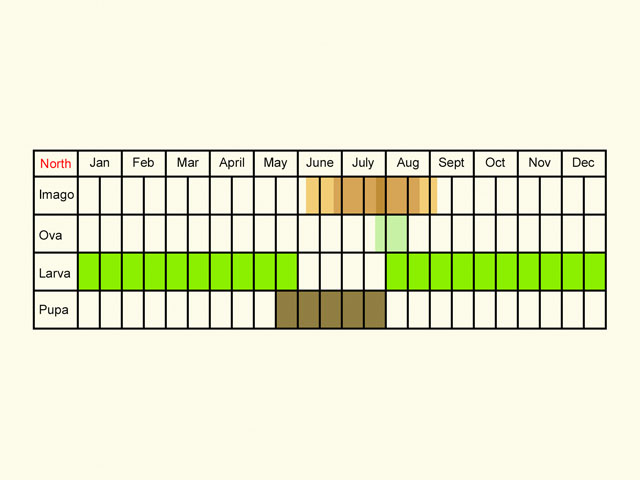Noctuidae
73.360 Triple-spotted Clay Xestia ditrapezium ([Denis & Schiffermüller], 1775)
Local
Similar species: Double Square-spot Xestia triangulum is a paler buff to grey moth. Square-spotted Clay Xestia stigmatica lacks the black dash near the apex of the forewing, but instead has a wavy dark shade across the wing from this point.
Forewing: 17 to 19mm
Habitats: Damp open deciduous woodland, carr and fenland scrub, less often in gardens.
Habits: The moth nectars at flowers and is attracted to sugar and light.
Foodplant: The nocturnal larva at first feeds on herbaceous plants including Primrose. In the spring it feeds on woody species such as birches, sallows, Dogwood, Blackthorn and Bramble. It hides in loose soil or leaf litter during the day. Pupation takes place in the leaf litter or just below the soil.
On the European mainland it has also been recorded feeding on Dandelion, Common Nettle, dead-nettles, stitchworts and Bilberry.




